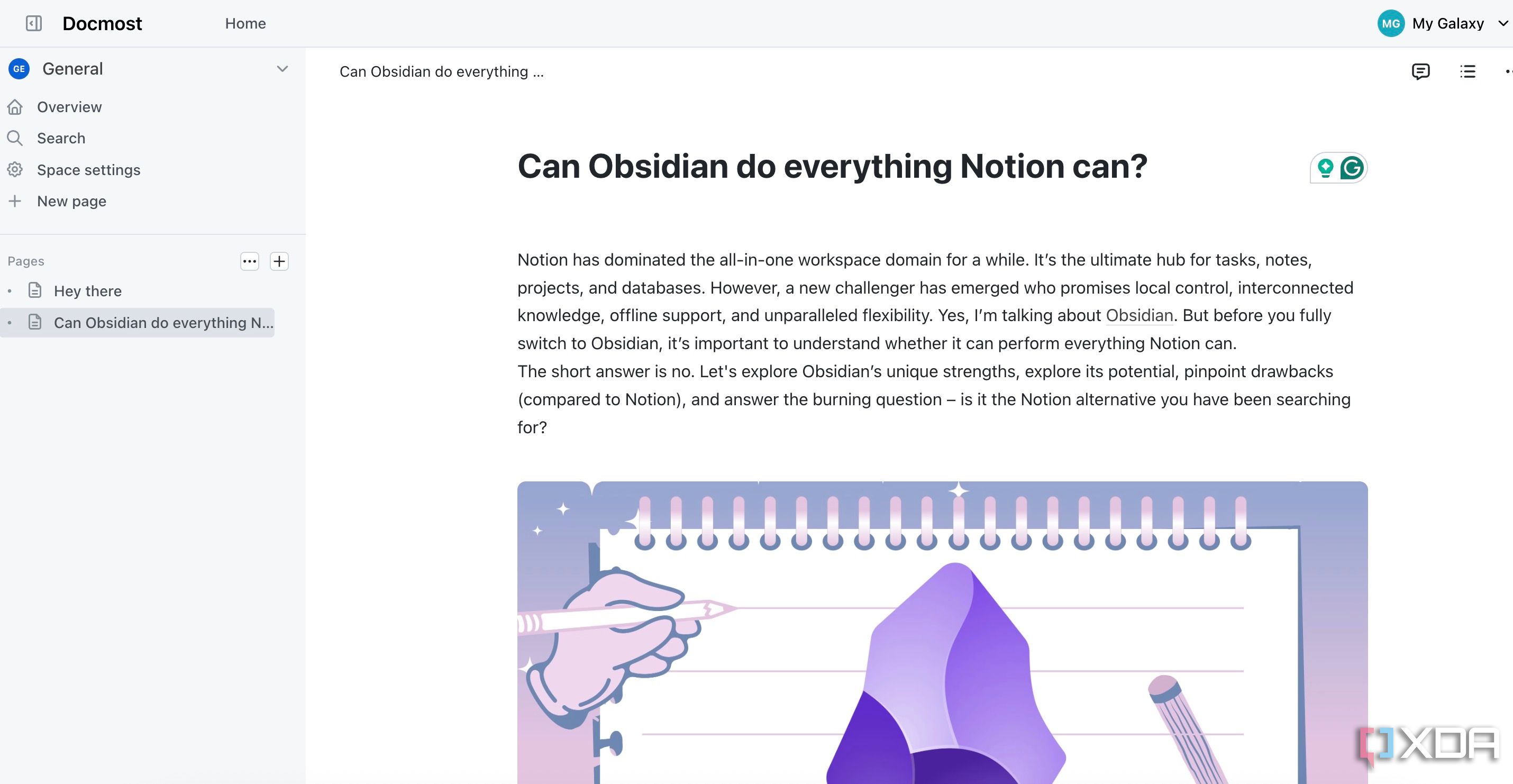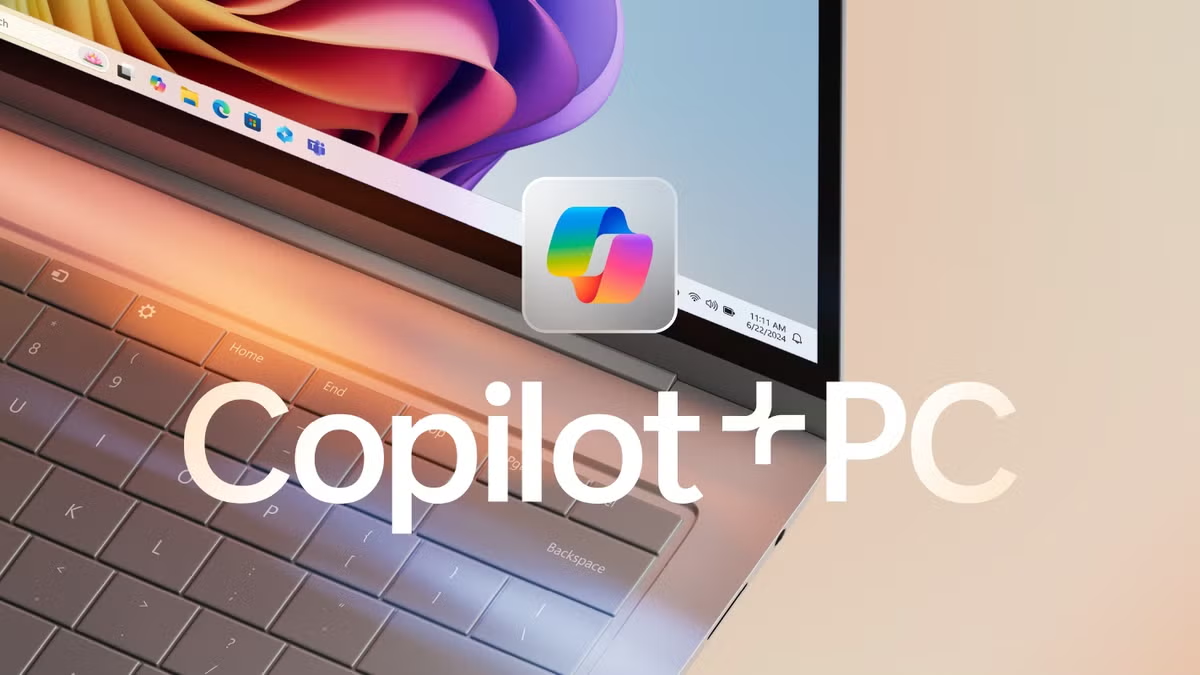While Notion has nailed thoughts, projects, and team organization, it offers limited control over your personal data and workspace. If you have been looking for a private Notion alternative, nothing beats a self-hosted wiki. There is no shortage of such tools and among them, Docmost stands out for several reasons. It offers a fresh perspective on document management and team productivity.
I took it for a spin and came away impressed. Here is why Docmost makes a compelling case for anyone aiming to build an all-in-one productive workspace.

Related
5 best Notion alternatives with offline mode
Top Notion replacements that will let you keep working without Wi-Fi
Has an identical user interface to Notion
Doesn’t require a learning curve
One of Docmost’s most appealing aspects is its remarkably familiar user interface that mirrors Notion. This deliberate similarity reduces the learning curve. Unlike other Notion rivals (Looking at you, Logseq, Anytype, and Capacities), you won’t have a hard time getting started with Docmost on your desktop machine. If you are used to Notion’s layout, structure, and functionality, you’ll feel right at home with Docmost. Even the organizational structure is identical (which I will discuss later).
A modern editor with a slash command
Eliminates toolbar
Docmost prioritizes a clean and uncluttered workspace. The integration of the slash command streamlines content creation. You can easily insert various block types, formatting options, and embedded elements with simple text inputs and avoid those cumbersome and busy toolbars. This results in a faster and more fluid writing experience.
If you are not familiar with the slash command, you can always use the Markdown language to format your notes. Markdown is particularly beneficial for those who prefer keyboard-driven workflows. The table of contents also comes in handy if you frequently deal with long documents. Like Notion, the ability to assign unique icons to Docmost pages adds a visual touch.
I also like several smart touches in the editor. For example, when you add a callout block, you can choose between info, warning, danger, and success types.
Robust organization
Create spaces for specific reasons
Docmost allows users to create distinct workspaces, each serving as a dedicated hub for specific projects and teams. For instance, you might have separate workspaces for Personal Projects, Team Collaboration, and Knowledge Base.
This feature is quite handy for users juggling multiple roles or managing diverse projects, as it provides a clear and organized framework for their work. Within each workspace, you can create a hierarchical structure of pages and subpages. For instance, you could have a Project X page and add subpages for Research, Planning, and Execution. The possibilities are endless.
Insert detailed diagrams
Visualize data in no time
Here is where Docmost edges out Notion. It has native support for Mermaid. You can easily generate various diagrams, such as flowcharts, sequence diagrams, and Gantt charts, directly within the editor using simple text-based syntax.
You can write Mermaid code into the Docmost editor, and the platform automatically renders the diagram in real-time. This seamless integration saves time and simplifies the workflow, as you don’t need to switch between external apps to refer to diagrams. You can even open Excalidraw editor right into a Docmost page, use the robust editor to generate a diagram and embed the same. Similarly, you can embed files from different services like Google Drive, Figma, Miro, Typeform, Framer, and more.
Supports real-time collaboration
Stay up-to-date
Docmost is right up there with Notion in terms of real-time collaboration. You can easily invite your team members with specific permission (read or edit) and start collaboration in no time. It just makes teamwork so much smoother. It’s cut down on meetings and email threads significantly. It also supports page history and a command system to engage in discussion.
Self-hosting capabilities
Store workspace data on your premises
One of the biggest factors that drew me to Docmost is its self-hosted nature. This self-hosting capability means I can store my sensitive information on my own servers, a private cloud, or even a local machine (preferred method). This level of control provides a significant sense of security and peace of mind.
For me, this private angle is crucial. I handle confidential data, and knowing that it’s stored in a location I fully control is a game-changer. I don’t have to worry about data breaches, unnecessary lock-ins, or unauthorized access from external sources.

Related
7 reasons I have started looking for Notion alternatives
Jake of all trades, master of none?
Start your self-hosting journey
It’s clear that Docmost isn’t just another Notion clone. It takes good bits from Notion and adds a security layer with self-hosting. Of course, it’s not perfect by any means. I would love to see database options (list, gallery, table, board, and calendar), mobile apps, and workflow automation in future updates.
However, as I mentioned above, Docmost has nailed the basics and with real-time collaboration, it can be the perfect tool for busy individuals and teams looking for a private workspace. Go ahead, give it a try, and keep prying eyes away from your personal data. If Docmost doesn’t work for you, check out another self-hosted alternative called Outline.

















